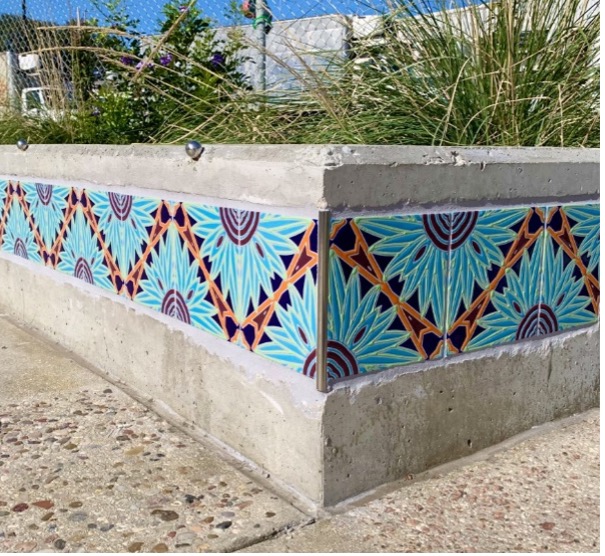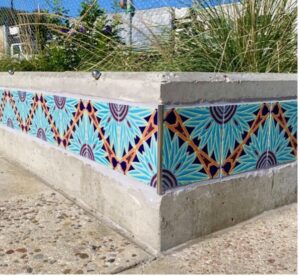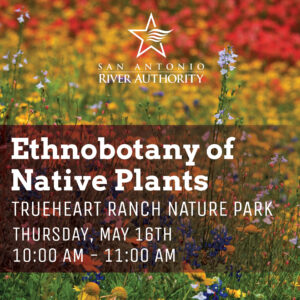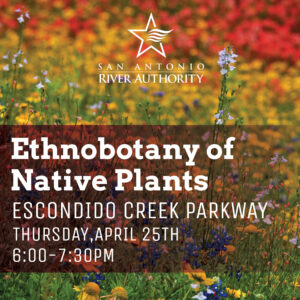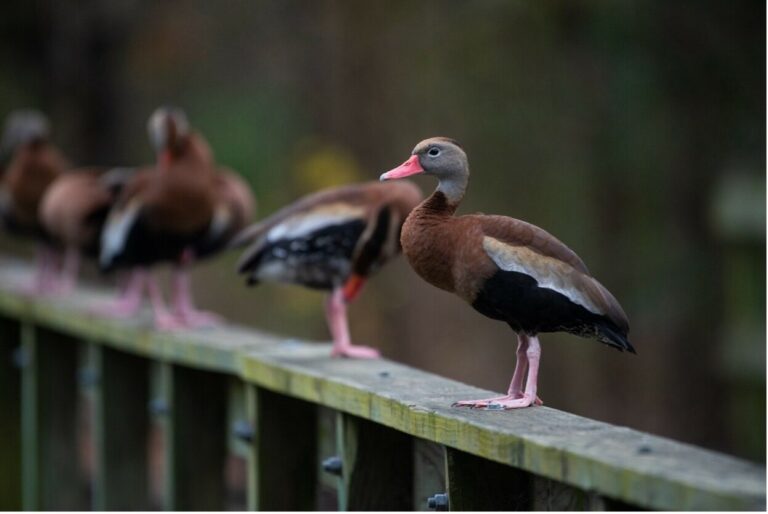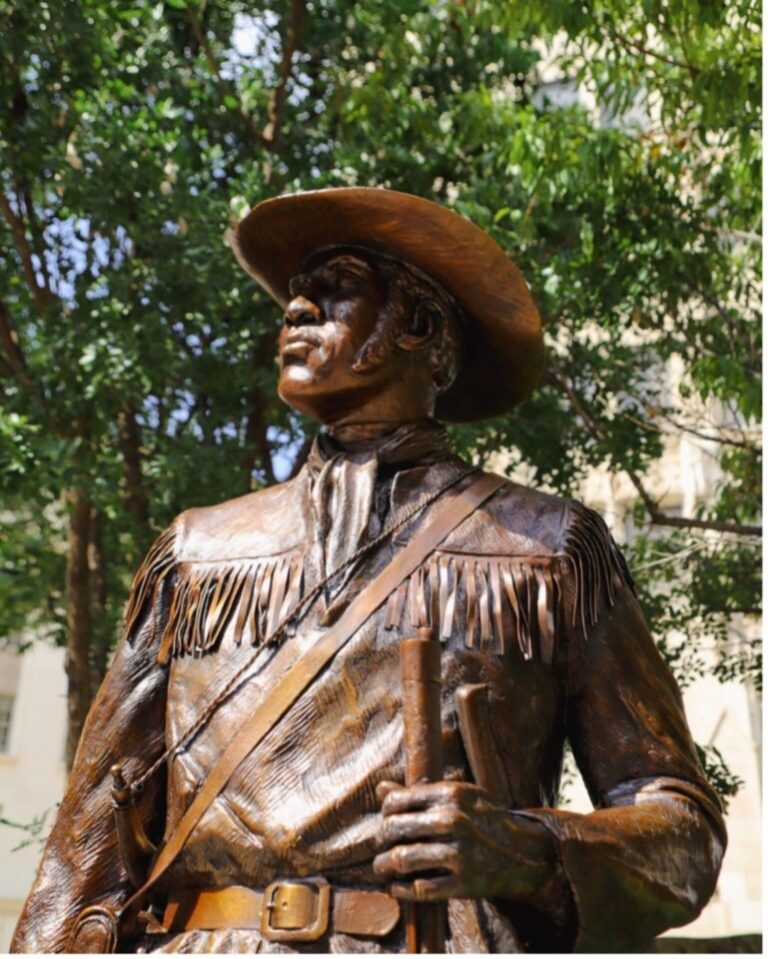Welcome to the Creative Currents series! Public art, cultural programming, and artistic design enhancements express what is authentic about today’s culture and explore the historical significance of area waterways through a contemporary art lens. This series provides an inside look at the many ways artists are incorporated into the San Antonio River Authority (River Authority) projects.
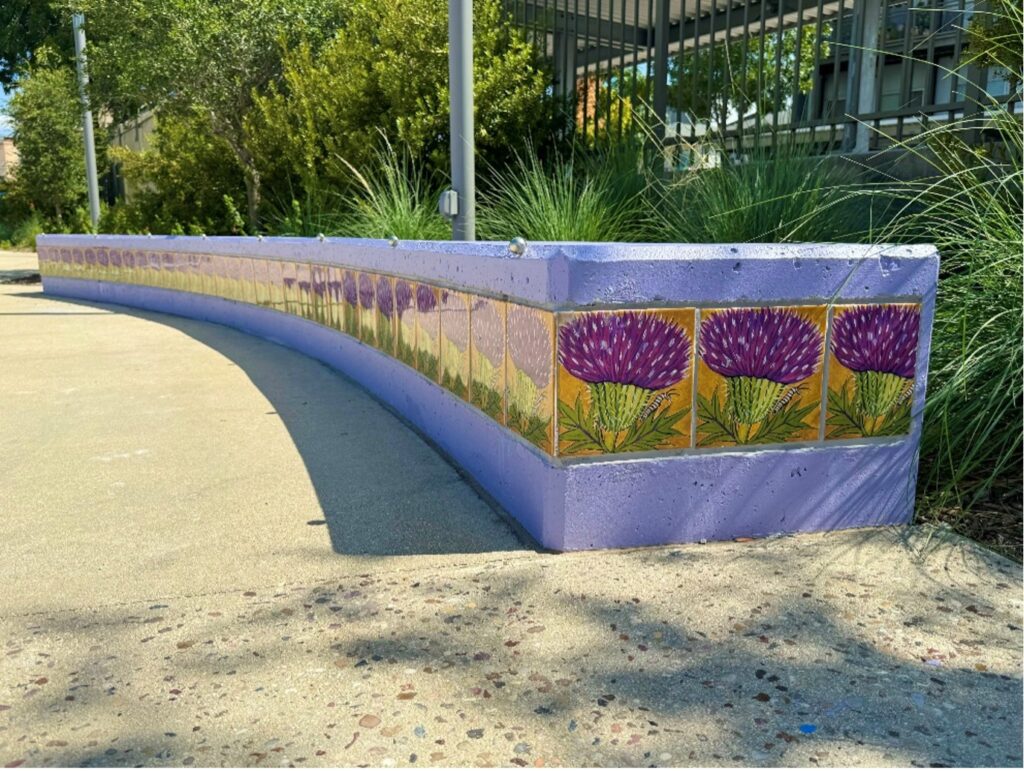
What do you feel when you go outside? Do you feel relaxed? Rejuvenated? How about inspired?
People have always looked to nature for inspiration. At the River Authority, not only do we look to Mother Nature to address issues of flooding and water quality by implementing Nature-Based Solutions, but we are inspired by her aesthetics.
It’s National Native Plant Month and in today’s blog, we will explore works of public art along the San Pedro Creek that highlight our resilient botanical buddies in the San Antonio River Basin!
Far before it was named San Pedro, the Creek’s water-nourished plants provided fruits, nuts, roots, and berries for broad groups of indigenous people. When the first Spanish explorers arrived, they were struck by its abundance of natural resources and beauty. The creek was considered lush, abundant, and ripe with potential.
De Todos Caminos Somos Todos Uno
Featuring representations of San Antonio across eras, this mural represents how San Pedro Springs brought forth life and growth to our community. Integral to Adriana Garcia’s storytelling is the feature of prickly pears (genus Opuntia), agarita (Mahonia trifoliolata), varieties of yucca, as well as pecan (Carya illinoinensis) and eastern cottonwood (Populus deltoides) trees.
As the name suggests, prickly pears are famous for their prominent fruit. A common warm-season snack, the bright pink-purple fruit stains the fingers of those who consume it. Speaking of which, the roots of agarita can be used to fashion a yellow dye. Additionally, they produce pea-sized berries sometimes used to make jelly or wine.
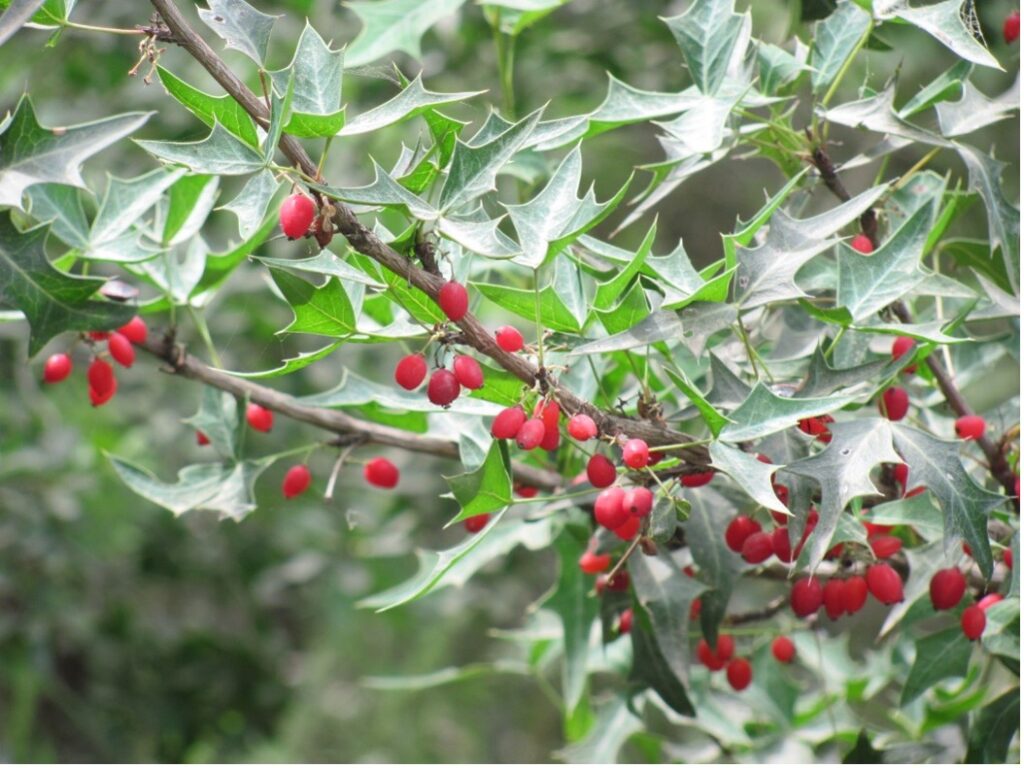
Agarita (Mahonia trifoliolata) Photo Credit: Lee Marlowe
Pecan trees are loved most for their fruit. The nuts can be eaten right off the ground, candied, blended into a spread, chopped for a salad, or added in baked cookies and pies. Designated as the state tree of Texas in 1919, they are also valued for wood, charcoal, and furniture building.
Also featured is the eastern cottonwood. You can see its fluffy seeds above the heads of the Spaniards on the right side of the expansive mural. Perhaps you may recognize its Spanish common name – Álamo! A larval host for many butterflies such as the eastern tiger swallowtail, this fast-growing tree is also prized for lumber.
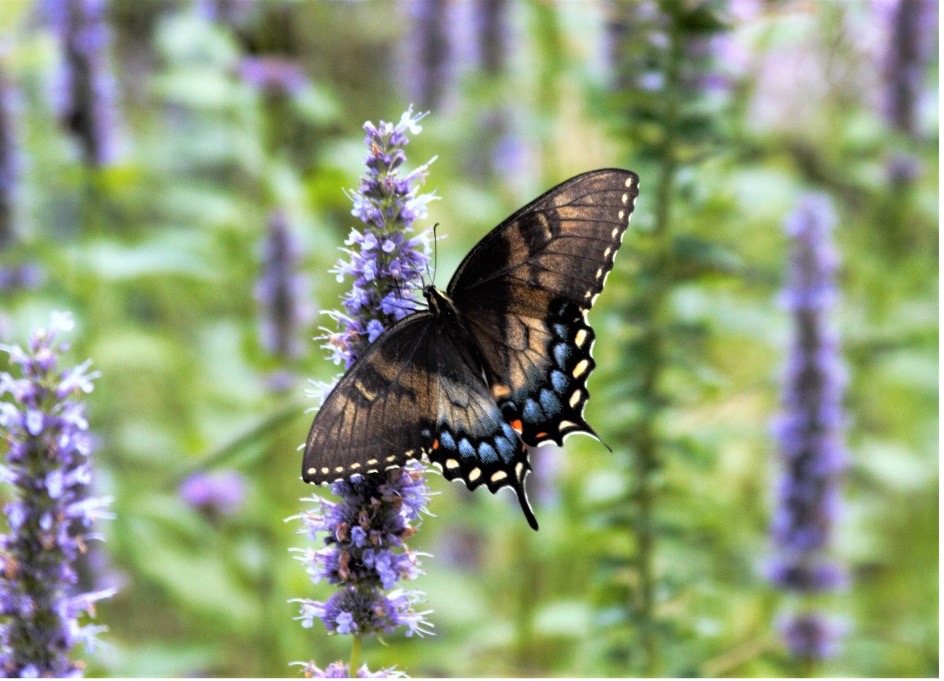
Easter tiger swallowtail (Papilio glaucus) Photo Credit: Peter Joseph
These murals pay homage to the flora and fauna that once flourished along San Pedro Creek. In the center of “Green Arch,” amongst the plethora of flowers, you’ll find coral honeysuckle (Lonicera sempervirens). Also known as trumpet honeysuckle, the plant is identified by its iconic flower shape and is a hummingbird favorite!
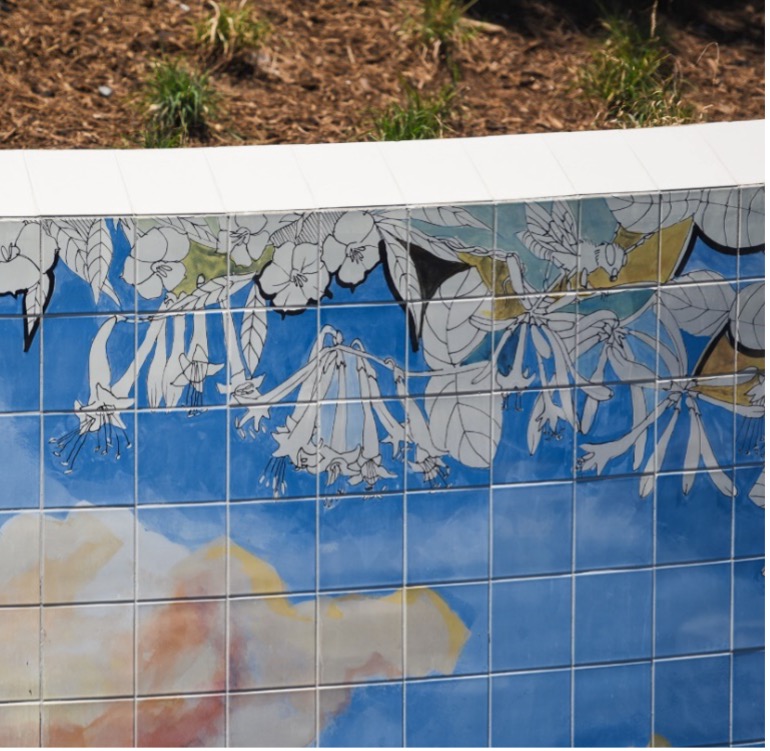
Featured throughout Phase 1 of the San Pedro Creek Culture Park, Micheal Menchaca wonderfully integrates the natural world into his repetitious designs along the San Pedro Creek. His design titled “Agave Rhythms” features agave leaves in the Meso-American tradition combined with an Art-Deco rosette ornament. Agaves, once dried, can create a fiber called pita to make rope, nets, and bags.
In the most recently completed sections of the Culture Park, Leticia Huerta, Well-known for her Bloom series, returned to her roots as a painter for this project. Inspired by the colorful wildflowers of South Texas, an array of flowers decorates park benches along the Creek. Heading south of El Paso Street, you can find one of four different designs on each bench – firewheel (Gaillardia pulchella), Texas thistle (Cirsium texanum), esperanza (Tecoma stans), and prairie celestials (Nemastylis geminiflora).
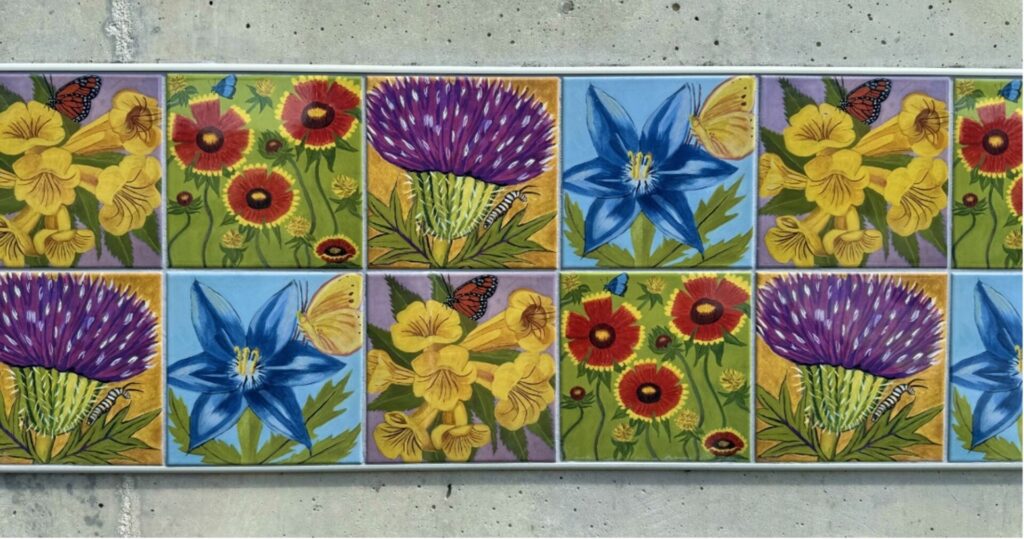
La Gloriosa Historia de San Pedro Creek

Located between Commerce and Dolorosa Streets, the series of five panels tell a beautiful narrative of San Antonio’s relationship with the San Pedro Creek over time. The first of these panels, pictured above, pays tribute to the natural resources that made San Antonio what is today. This panel introduces us to some new friends such as pickerelweed (Pontederia cordata), water lily (genus Nymphaea), mustang grape (Vitis mustangensis), and velvet mesquite (Prosopis velutina). This piece also summarizes plants we’ve covered so far – how many do you recognize?
Pickerelweed, an aquatic plant found all along the Creek, has been used for food, with its seeds and new growth edible and sometimes used in salads. Also used as a food source, the mustang grape forms a bitter fruit that can be processed into jellies and wine.
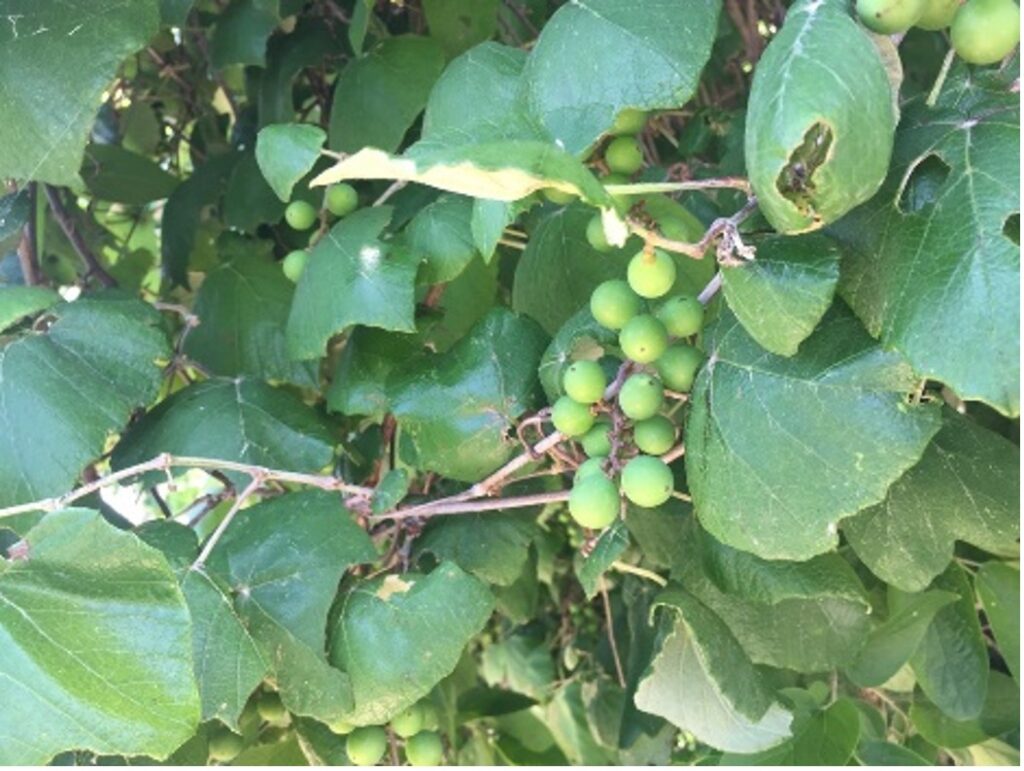
Mustang grape (Vitis mustangensis) Photo Credit: Peter Joseph
The velvet mesquite (and other mesquites) in general are of particular importance to Texas as their presence signifies water. Their incredibly deep taproots mean they can source ground water other plants cannot reach. Deep mesquite taproots have also given them the nickname “devil’s tree” as they are difficult to remove and will come back with a vengeance if cut down.
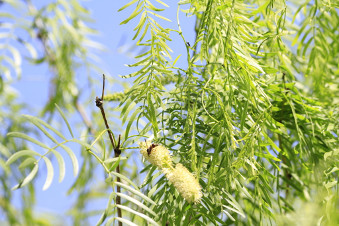
Honey Mesquite (Neltuma glandulosa) Photo Credit: Peter Joseph
So, which of these Texas natives did you already know? Any growing in your yard?
April is perfect for National Native Plants Month here in the Lone Star State, but it’s great to have the beauty of these plants celebrated in art so they can be appreciated even as the seasons change.
Interested in learning more? The River Authority hosts a variety of events with a focus on native plants including a new series “Ethnobotany of Native Plants!” Join San Antonio River Authority staff on a hike to explore the relationship between the plants and people along the San Antonio River.

